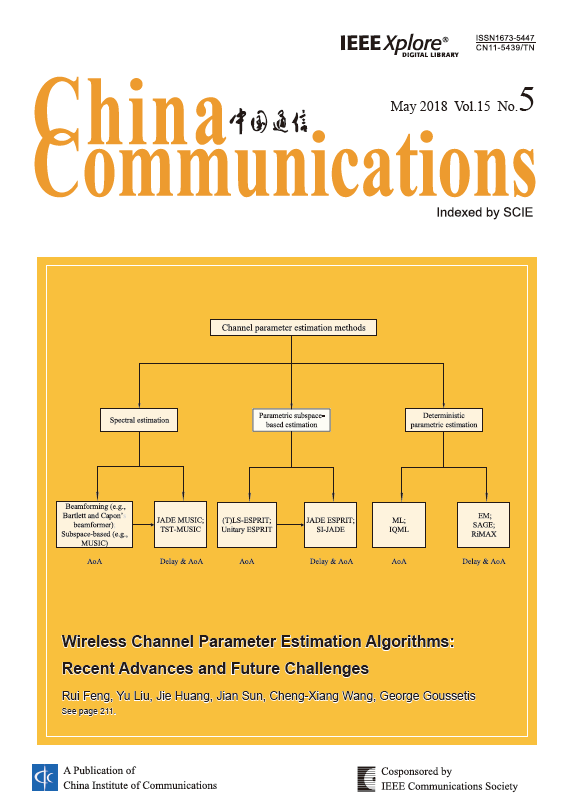SIGNAL PROCESSING FOR COMMUNICATIONS
Rui Feng, Yu Liu, Jie Huang, Jian Sun, Cheng-Xiang Wang,George Goussetis
2018, 15(5): 211-228.
Temporal and three-dimensional (3D) spatial information is important for the characterization of wireless channels. In this paper, the commonly used array signal processing (ASP) methods to estimate channel parameters are summarized. Firstly, algorithms that can be used to estimate azimuth angle of arrival (AAoA) and elevation AoA (EAoA) are introduced. They include multiple signal classification (MUSIC), estimation of signal parameter via rotational invariance techniques (ESPRIT), and Unitary ESPRIT algorithms. Secondly, algorithms that can be used to jointly estimate delay, AAoA, and EAoA are given. They include joint angle and delay estimation (JADE) MUSIC, JADE ESPRIT, shift-invariance (SI) JADE, and space-alternating generalized expectation-maximization (SAGE) algorithms. We also propose an improved SI-JADE algorithm to further reduce computation complexity by incorporating with the Unitary ESPRIT algorithm. Performance of the above algorithms to extract only spatial information and to jointly extract temporal and spatial information is compared in both synthetic and 60 GHz real channel environments. Simulation results show that with the inclusion of delay estimation, the joint temporal and spatial estimation algorithms can provide better resolution than algorithms estimating only angles. Measurement data processing results show that MUSIC algorithm can provide comparable results with SAGE algorithm in estimating AAoA and EAoA. SI-JADE and the improved SI-JADE algorithms are also applicable to process 60 GHz channel measurement data. However, MUSIC, SI-JADE, and the improved SI-JADE algorithms can greatly reduce computational burden compared with SAGE algorithm. At last, some future directions are pointed out.
